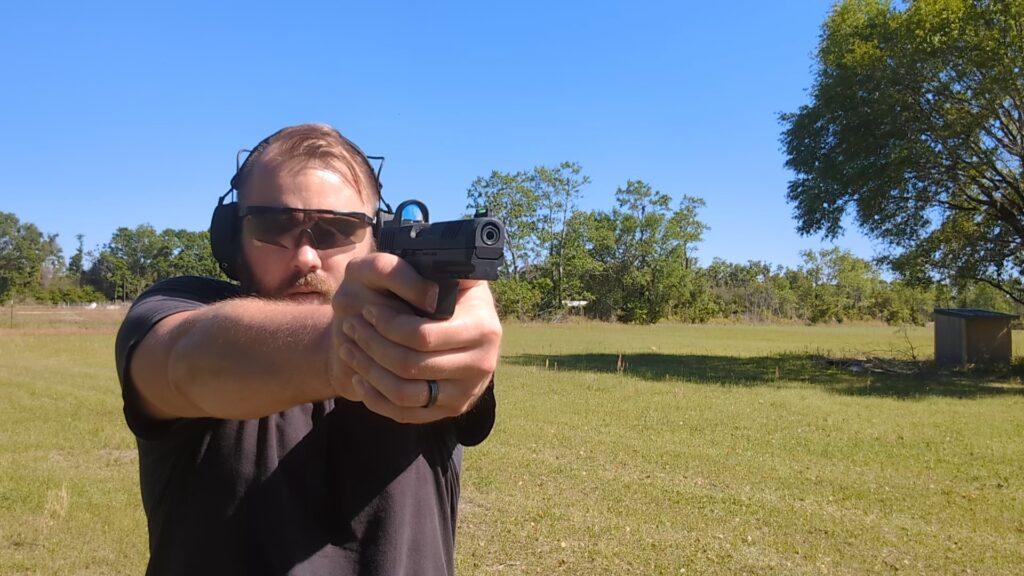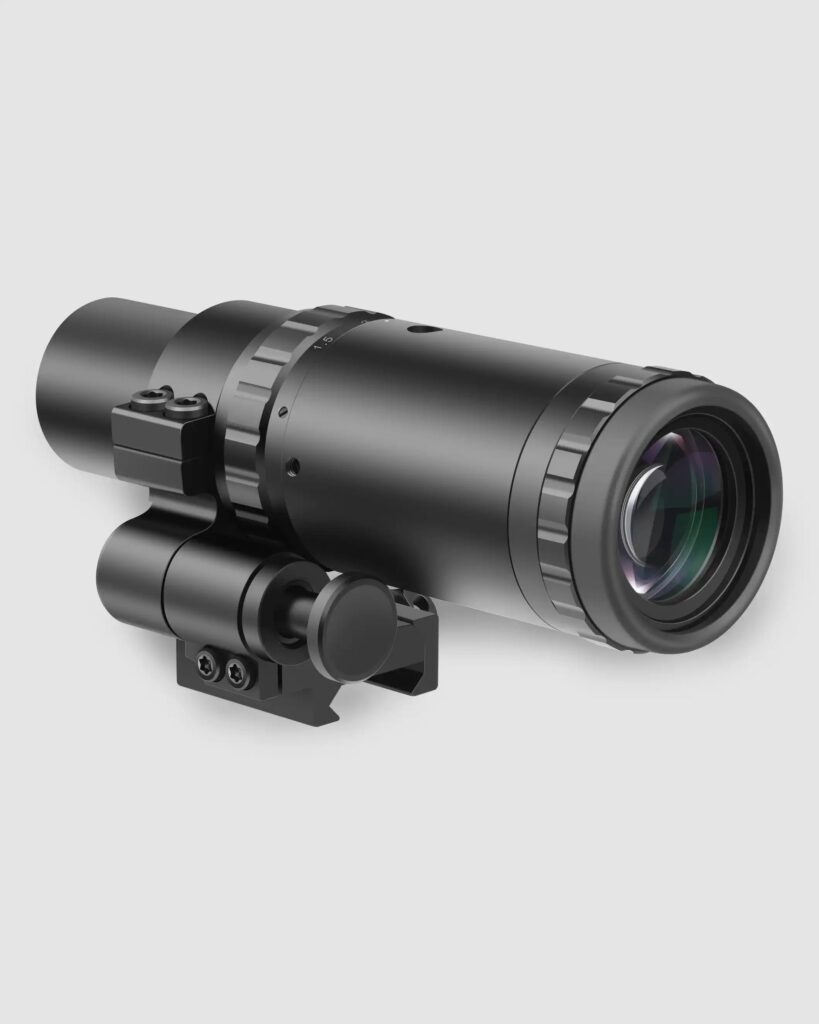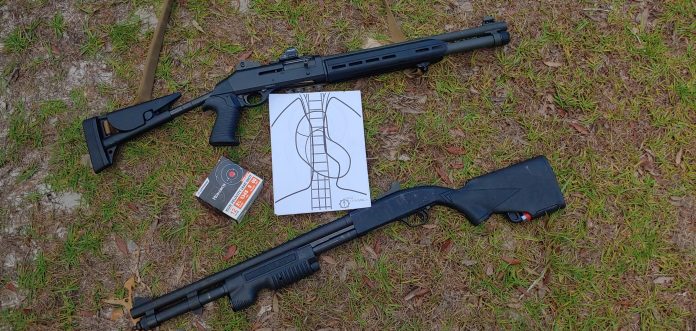Discussing home protection guns is always a treat, especially when you get into the various “camps” or schools of thought when it comes to one or another home defense set ups. There are some constants though, regardless of weapon type, that emerge and Mike, THE Garand Thumb, hits a lot of those points solidly in these 18ish minutes.
These are points that are worth repeating because these are questions that are constantly asked. These are good questions.
Home Defense
Home defense does not start with the gun. The gun is the final tool, not the first. Home defense starts with security conscious decisions about locking your doors. Installing alarms, sensors, and motion lights. Having a fire escape plan and building good conscious habits. That first and most effective layer keeps out the “handle rattlers” types, individuals or groups who are looking for easy low risk access to steal stuff or cause other mischief.
Advertisement — Continue Reading Below
This isn’t just lock your doors “at night” while you are sleeping, doors should remain locked and your property in a state of security both when you are away from it and when you are at home. The type of predation changes but you can keep that security blockade in place. Certain predators, the classic ‘burglar’ with his mask and dark sweat suit, are looking for an unoccupied space for easy financial gains. Home invaders on the other hand are specifically looking for occupied dwellings to exploit the inhabitants in some way. Home invaders are seeking direct conflict.
Take appropriate, simple, and consistent precautions against unauthorized access. Simultaneously, recognize that against a determined individual or group your routine precautions are only hurdles to clear and that they are in place to allow you to get to your more forceful responses.
Home Defense Gun
I, like Mike, am a rifle guy. The semi-automatic, magazine fed, intermediate caliber rifle is the greatest universal individual fighting tool man has devised. But if you are a ‘carry gun is fine’ or a ‘haha, shoulder claymore go boom‘ type we are all in the same basic mindset of ‘Have a Home Defense Gun’
Advertisement — Continue Reading Below
Putting aside the debates of caliber effectiveness and how wise certain items are for your use or your other household members use…
(No, your 5’2″ wife, girlfriend, or daughter cannot effectively use your 12ga that they are scared to shoot because it bruises they shoulder. Or perhaps yes, they can use it because they like and regularly do shoot it in trap, skeet, or 3-gun and it has a light, barrel length, and optic appropriate for defense)
…the home defense gun requires, yes requires, the following:
Advertisement — Continue Reading Below
Reliable Operation.
It needs to run and hit what you aim at. If more than you is expected to use it in an emergency it needs to run for them and hit what they aim at.
A. LIGHT.
Advertisement — Continue Reading Below
Put a good light on your gun. TLR-1 HL, TLR-7/7A, TLR-9, TLR-RM1/2, X300U, Surefire Scout 300/600/600DF/Pro, Modlite, Cloud Defensive. That’s the list I have durability data on that I trust.
Weapon light is preferred to a carried light, it allows both of your hands to be free to work. If you need general lighting, flip the light switch. Handheld will be the alternate.
Home Defense Ammunition
Advertisement — Continue Reading Below
Regardless of caliber, pick an ammunition type that will work.
Pistols get good Jacketed Hollow Points. Pistol Caliber Carbines too. Check for reliable cycling.
Rifles get expanding jacketed defense ammo like Gold Dot, Mk262 clones (77gr OTM), or Mk318 (62gr expanding solid copper), etc. When in doubt on rifle, pick a ‘medium game’ round as that is what the human body structure classifies us as. In a pinch, solid lead core FMJ will work also and avoid M855 if possible, M855/SS109 has a poor ballistic track record when it comes to home defense.
Advertisement — Continue Reading Below
Shotguns get slugs and buckshot. Pattern your buckshot when you zero. Be aware of what your gun is actually doing and keep the fuddlore mysticism about not having to aim and all that garbage away. We’re adults and we can admit that some of the stuff we used to believe was bullshit.
Home defense guns greatly benefit from:
Red Dot or LPVO Optics (platform appropriate)
Advertisement — Continue Reading Below
Optics > Irons. They are faster and more precise and more forgiving of hasty eye positions.
High Capacity Magazines
Especially in pistol and shotgun formats, bumping up the number of available rounds to deal with a home invasion against 2-4 assailants is a good idea. Turn that 5 round tube into an 8 or 9, put a side mount of some sort on for more ammo. At home, switch out the 15-17 round carry magazine for a 21+ home magazine.
Advertisement — Continue Reading Below
Rifles? D60 time.
The thing you do not want to be doing in the up close and personal confines of your living space where you assailant(s) are at arms length is reload.
Home defense guns benefit from:
Suppressors
Guns are loud. Really loud in confined spaces. Rifles especially will benefit from being suppressed to save your ears and eyes. The shorter the barrel the greater the benefit. PCC’s will too but handguns and shotguns less so, they get can be hard to balance running suppressed against the challenges and awkwardness of doing so.
Alternatively, electronic hearing protection by the home defense gun. Put them on and turn them up. Do this inside a few times and move around so you can get a sense for your altered hearing perception. Have family move around in various rooms, think about what you can hear and how it sounds for better environmental awareness.
Sling
Long guns benefit from slings, it makes it far harder to snatch away from you and easier to ‘drop’ if you need your hands. Yes there are a million things in your home to put your gun down on too but the sling gives you more options, not less.
‘Bandolier’ of Holding
Something, anything, that you can easily drape onto your body relatively securely that brings along the medley of first aid gear, a little spare ammo (1-3 magazines, maybe also has your pistol in a holster), and perhaps a pocket to shove your cell phone in, to go hands free. Flex cuffs might not be a bad idea. A way to carry useful things while in a likely ‘pajama clad’ state.
Situationally Beneficial Additions
Laser/Illuminators
Visible lasers have limited utility but IR pair with night vision for accurate aiming without increasing your light output. The visible component is generally co-aligned so zeroing is easy. IR Laser/Illuminators are very hand paired with night vision, the most affordable I have found is Streamlight’s TLR-VIRII, which also doubles as a very decent 300 lumen visible light.
More expensive MAWLs, DBALs, and PEQs generally dominate this section but NODs and IR aiming and observation are very high dollar investments. They may benefit your particular situation though, so invest at need. Also, really fun.
NODs/Night Vision
Expensive increase in your ability to observe greater distances. No, NODs are not practical moving in your house, too much ambient light even at their darkest and too much extra noise that you will generate moving. The white light is fine. They definitely cool to move around with, but they aren’t going to allow you to ‘get the drop on someone’ any better than rapidly and effectively securing your position for defense. In that scenario NVGs/NODs may provide benefit since they would not require light to let you observe from your position of advantage. It’s a very expensive advantage.
But for the situation of observing exterior property without silhouetting yourself with interior lights or using a light that gives your location away they do fantastic. For a situation in which you exterior lighting isn’t functional also. These are pretty far out one offs but not into the realm of unreasonable if the disposal income is there to invest. Their fun factor makes up for the limited application.
Hell, way less work and hassle than boat.
My Home Gun
I’ll cover in a later post. Talking about the differences in General Purpose (which can easily be home defense) and Home Defense specific (which can leverage into general purpose) applications. Among the greatest strengths of the rifle is its flexibility, it covers a great many applications.















